My final project is a home/virtual assistant using a Raspberry Pi. With AI being very popular, there are many ways to create a virtual assistant. I followed an online tutorial to set up the main program. The aesthetic and design aspect of the project is in the enclosure of the Raspberry Pi and hardware. I further developed some of the ideas I had while working on the upcycling project. With the many constraints of that project, I wasn’t able to do everything I wanted. For this final project, I 3D printed the enclosure to give it a much better finished look. The enclosure also features a screen to communicate different things to the user.
Growing up, my personal aesthetic was very plain and minimalistic. As I started to explore different styles and aesthetics, I started to develop my love for color and bright designs. Different pop culture influences helped me develop my style and aesthetic. Graffiti art has always been prevalent. Graffiti has exaggerated features and a lot of color. When I think of this art, I think of the great culture and places I’ve grown up in.
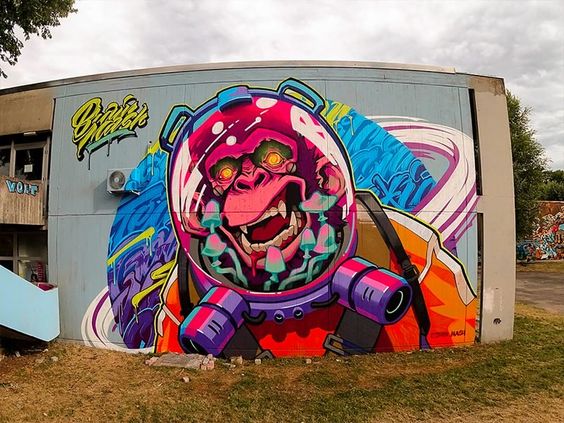
Combining the bright colors of graffiti and my love for technology, my project aesthetic feature these two aspects in a way I’ve never done before. I am taking inspiration from games like Valorant and more specifically the character Raze. Raze has a boombot that is very colorful and covered with graffiti. This is the aesthetic I am going for. Ever since I saw this bot, I really wanted to recreate it or do something similar.
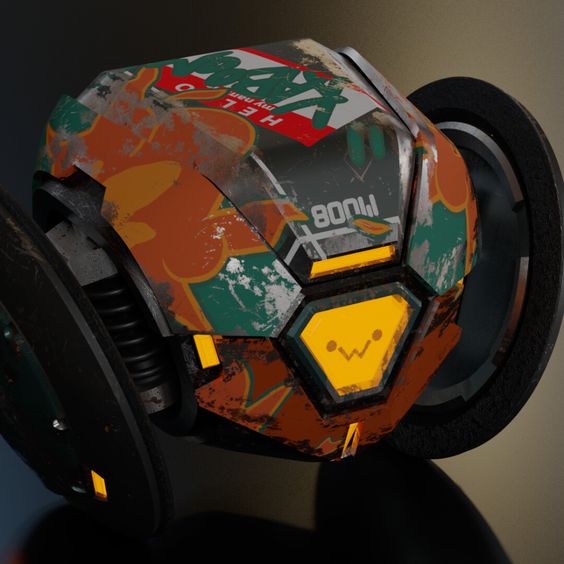
Raze’s Boombot – Alvaro Bernal
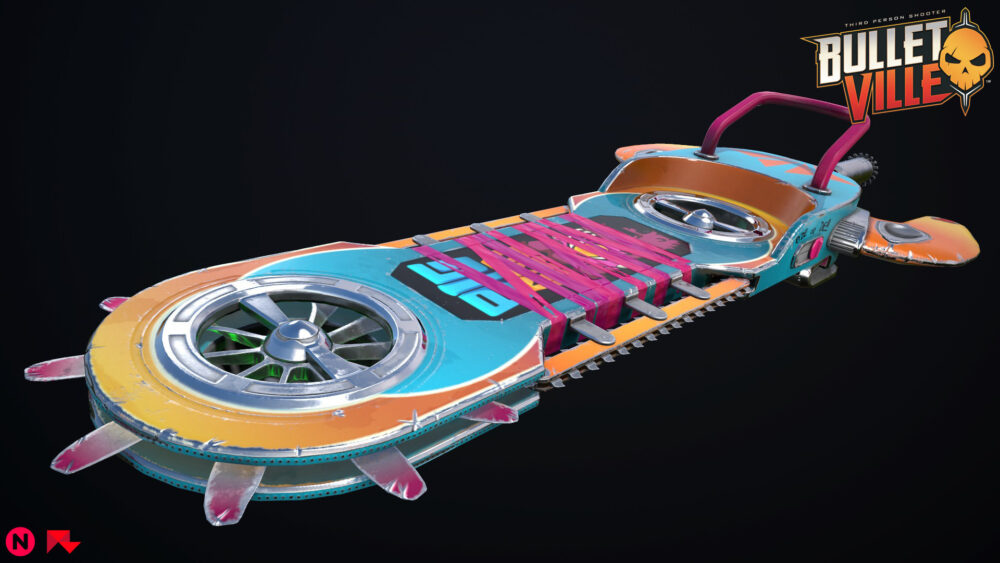
Bullet Ville – Wolfie’s Hoversaw – Dani Ferguson
The images above are the general ideas of the aesthetic for the virtual assistant. This is a bit outside of my comfort zone since I tend to gravitate towards a more minimalist aesthetic when fabricating things. Since the hardware for this project is minimal, I had a lot of freedom with the enclosure and attempted to create something interesting.
The biggest aspect of this project and class is the aesthetic and that was one of my priorities. The Cyberpunk aesthetic has a lot of rigid components to it. Incorporating this in my design helped elevate the design and help it pop on my desk. Also adding the graffiti design and color will help tie the product together. I wanted this to look well designed but also look like it stood the test of time. Adding scuffs and making it look like its used is something I also included and focus on.
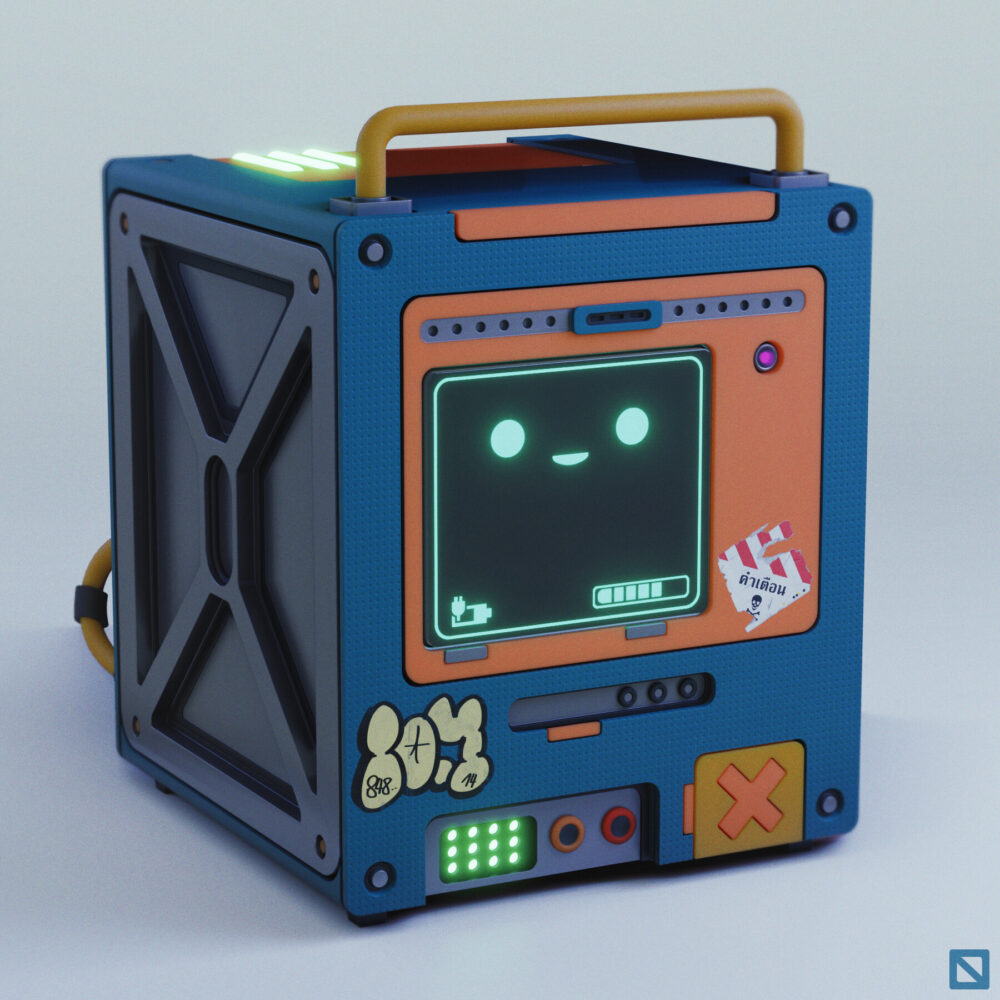
Happy-Cube – Gareth Davies
Designing something that fit the aesthetic I wanted for this project and is well designed was a challenge. Rapid prototyping with 3D printing helped me get to the best iteration possible as fast as possible. I also took my time with sketching and ideation to have a well refined product before I started printing.
The different animations for the virtual assistant was a must for this project. It gives the virtual assistant some character and interactivity. An LCD screen animates different expressions when it speaks. This required different frames with various faces that quickly change when the robot recognizes specific words.
A big part of the virtual assistant is ease of use. Activating the device with voice commands was ideal to be able to use it while I’m working on different things.
With all these wants and needs settled, I was able to sketch out what I wanted the enclosure to look like. The following images are some sketches of the design I was going for:
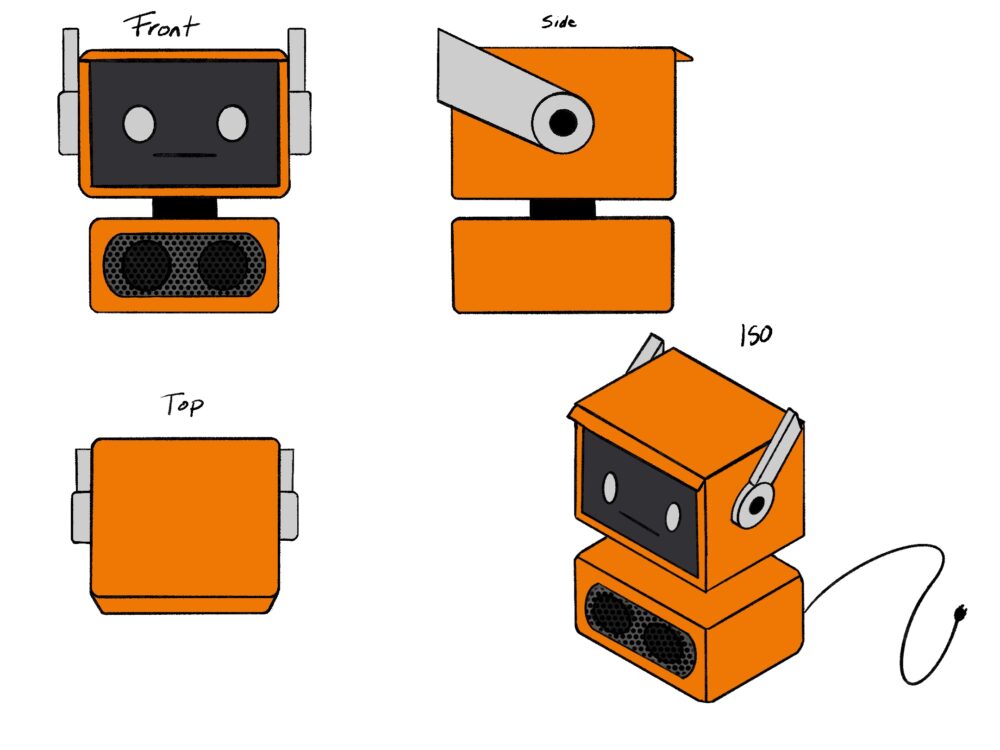

1 Comment. Leave new
I think you nailed the aesthetic that you were going for. I like the color scheme that you chose, and the friendly look of the virtual assistant. I did a similar project to this for mechatronics with a robotic dog that can access chatgpt. I am curious if you had issues with it reliably responding to wake words to start listening, like a “hey siri” type phrase.